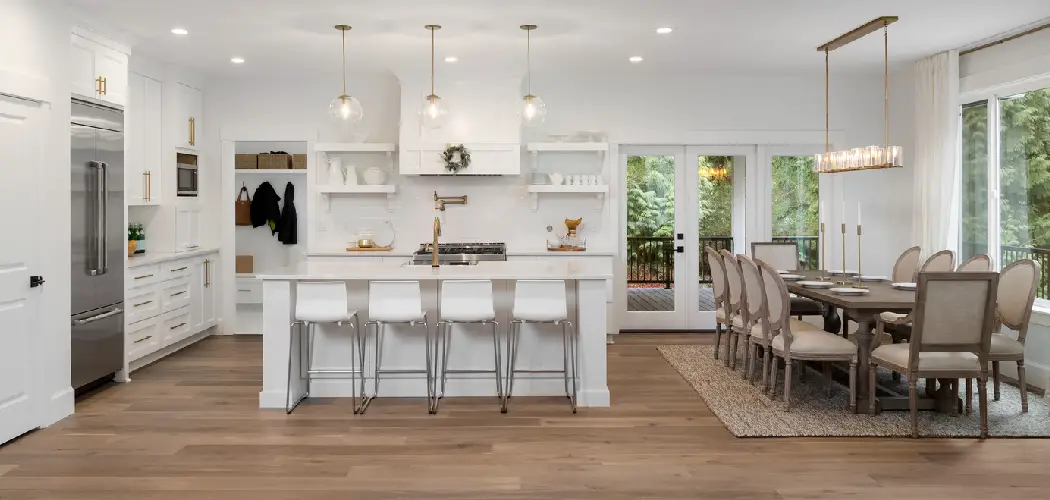Dining room lighting is a critical element for functional and aesthetic purposes. It ensures optimal brightness for meals and sets the mood, creating an inviting ambiance for family gatherings and special occasions.
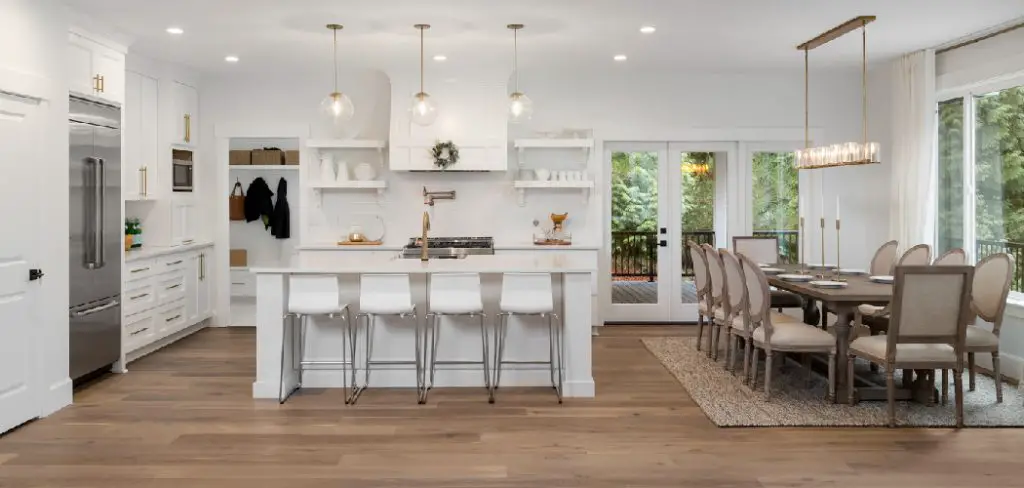
The right lighting can highlight the design of your dining room, emphasizing key features like your table, décor, and architectural details. Furthermore, it fosters a comfortable and pleasant environment, boosting the overall dining experience.
Understanding how to choose dining room lighting plays a vital role in achieving a harmonious combination of style and functionality. From chandeliers to pendant lights, there are countless options to consider, making the decision exciting and overwhelming.
This article provides a comprehensive, step-by-step guide to help you select the perfect lighting for your dining room. By the end, you’ll feel confident in choosing fixtures that elevate your space while reflecting your personal style and practical needs.
Assessing the Dining Room’s Style and Layout
Identify the Room’s Design Theme
The first step in selecting dining room lighting is to identify the overarching design theme of the space. Whether your dining room has a traditional, modern, rustic, industrial, or eclectic aesthetic, the lighting fixtures should complement the style.
For example, a crystal chandelier can enhance the elegance of a traditional space, while sleek, minimalist pendant lights are often better suited for modern or industrial designs. Matching your lighting to the room’s aesthetic is essential for achieving a cohesive and visually appealing look.
Consider Room Size and Layout
Pay close attention to the dimensions of your dining room, as these dictate the appropriate size of your lighting fixtures. Measure the room’s length, width, and ceiling height to ensure your chosen piece isn’t too large or small for the space.

Ceiling height is significant for pendant lights or chandeliers, as they need to hang at an ideal height above the table – typically 30-36 inches. Properly scaled lighting creates a balanced and proportional appearance.
Evaluate Furniture and Décor
Lastly, your furniture and décor are pivotal in determining the right lighting. Align the fixture’s style and placement with the dining table’s shape and size. For instance, rectangular tables often pair well with linear pendant lights, while round tables may call for a single, centered chandelier.
Additionally, consider how wall colors and materials reflect light, as darker hues absorb light while lighter shades enhance brightness. Taking these elements into account ensures a harmonious design and optimal functionality.
Types of Dining Room Lighting Fixtures
Chandeliers
Chandeliers are a classic choice that adds elegance and serves as a central focal point in the dining room. They come in various styles, from traditional crystal designs to modern interpretations, allowing homeowners to find one that complements their décor. Chandeliers above the dining table provide ample light and a sophisticated atmosphere.
Pendant Lights
Ideal for modern or minimalist settings, pendant lights work exceptionally well over long or rectangular tables. These fixtures are available in many sizes and shapes, allowing for single arrangements or grouping multiple lights together. Pendant lights offer both functional illumination and contemporary flair.
Flush-Mount and Semi-Flush Fixtures
Flush-mount and semi-flush fixtures are perfect for dining rooms with lower ceilings or more compact spaces. These fixtures provide substantial light without overwhelming the room, offering a streamlined appearance that maintains functionality and style.
Track Lighting
Track lighting offers great flexibility with its adjustable light direction. This option is particularly beneficial for dining rooms that require emphasis on different areas, such as art pieces or additional surfaces. It’s a practical yet stylish choice for modern designs.
Wall Sconces
Wall sconces contribute ambient lighting that complements the dining room’s primary fixtures. Typically mounted along walls, these lights enhance a room’s atmosphere without overpowering its design, adding both charm and warmth to the space.
Choosing the Right Size and Placement
Size Guidelines
When selecting a lighting fixture for your dining room, size plays a pivotal role in achieving a cohesive design. The fixture’s diameter should typically measure between 1/2 to 2/3 the width of the dining table.
This ensures the light fits proportionally within the room and complements the dimensions of both the table and available space. Oversized or undersized fixtures can disrupt the balance and harmony of the dining area, so always consider the scale meticulously.
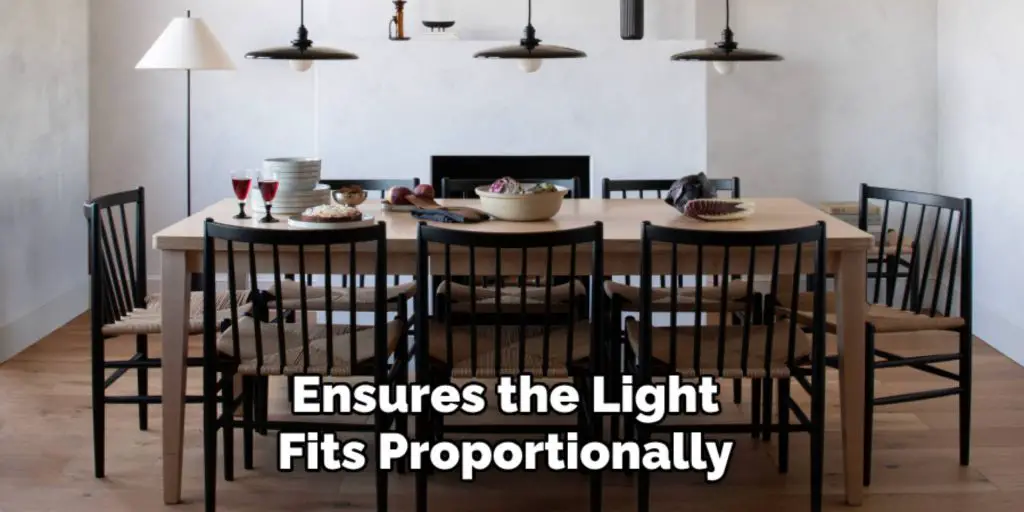
Height Placement
Proper height placement is equally essential for functional and aesthetic purposes. As a general rule, hang the fixture 30-36 inches above the dining table’s surface.
This placement provides an optimal balance between sufficient illumination and unobstructed sight lines. Consider adjusting the height slightly for rooms with higher ceilings to maintain proportion. Similarly, lower ceilings may necessitate closer placement for consistency.
Spacing
When using multiple pendants or lights, spacing is key to creating a well-structured look. Evenly distribute the fixtures across the table length, ensuring symmetry for visual appeal. Thoughtful placement enhances the space’s aesthetic and provides consistent lighting for diners seated around the table.
How to Choose Dining Room Lighting: Lighting Types and Brightness Levels
Ambient Lighting
Ambient lighting serves as the foundation of a room’s illumination, providing soft and even light coverage that ensures the space feels welcoming and functional. This type of lighting eliminates harsh shadows and creates a balanced atmosphere, perfect for dining rooms where comfort is prioritized.
Task Lighting
Task lighting focuses on illuminating specific areas, making it particularly important for the dining table surface. It ensures that the table is well-lit for practical purposes, such as dining, reading, or working. Pendants and chandeliers often serve as ideal sources of task lighting when strategically placed.
Accent Lighting
Accent lighting plays an aesthetic role, spotlighting the dining room’s artwork, décor, or architectural features. This type of lighting adds depth and dimension to the space and elevates its overall design, contributing to a sophisticated ambiance when combined with other lighting types.
Brightness Tips
To achieve both flexibility and functionality, opt for dimmable light fixtures that allow you to adjust brightness for different moods or activities.
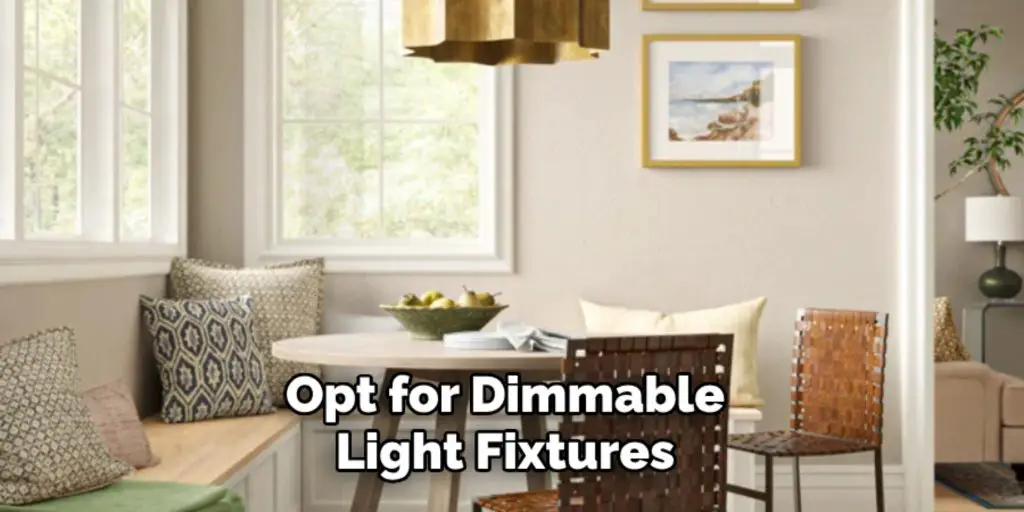
For ideal illumination, choose bulbs ranging from 2000 to 4000 lumens, depending on the room’s size and your preferences. This attention to brightness ensures the dining space remains both practical and visually pleasing.
Bulb Choices and Color Temperatures
When selecting bulbs for your dining room, understanding the differences in bulb types and color temperatures can significantly impact the atmosphere and functionality of the space.
Bulb Types
- LED: These bulbs are energy-efficient and have an exceptionally long lifespan, making them an eco-friendly choice for modern homes.
- Halogen: Offering bright, warm light, halogen bulbs are a more traditional option; however, they are less energy-efficient than LEDs.
- Incandescent: Known for their classic glow, they provide a soft, warm light but are less durable and consume more energy compared to more modern alternatives.
Color Temperatures
The color temperature of a bulb determines the ambiance it creates in your dining room.
- Warm white (2700K-3000K): Perfect for creating a cozy and inviting atmosphere, ideal for casual dinners and intimate gatherings.
- Neutral white (3500K-4000K): A versatile choice for a modern aesthetic, this temperature works well for a brighter, contemporary setting or multifunctional use.
CRI (Color Rendering Index)
For a dining room that showcases your food and décor in the best light, opt for bulbs with a high CRI (90+). These bulbs accurately render colors, enhancing the visual appeal of your meals and the room’s design elements, resulting in a vibrant and elegant space.
Energy Efficiency and Smart Lighting Options
Energy-Saving Features
To optimize energy efficiency in your dining room, choose LED fixtures and bulbs, which consume significantly less electricity than traditional incandescent and halogen options.
LEDs lower your electricity bills and have a much longer lifespan, reducing the need for frequent replacements. Consider dimmable LEDs to adjust brightness levels and save even more energy during casual or relaxed settings.
Smart Lighting Systems
Enhance convenience and customization with smart lighting systems, which allow you to control brightness, color temperature, and even scheduling through smartphone apps. These systems can be integrated with popular voice assistants like Alexa, Google Assistant, or Siri, providing a seamless, hands-free lighting experience.
Smart bulbs also enable you to set automated routines, such as dimming the lights during dinner or creating ambient presets for special occasions. This combination of efficiency and technology can transform your dining room into a modern, energy-conscious space.
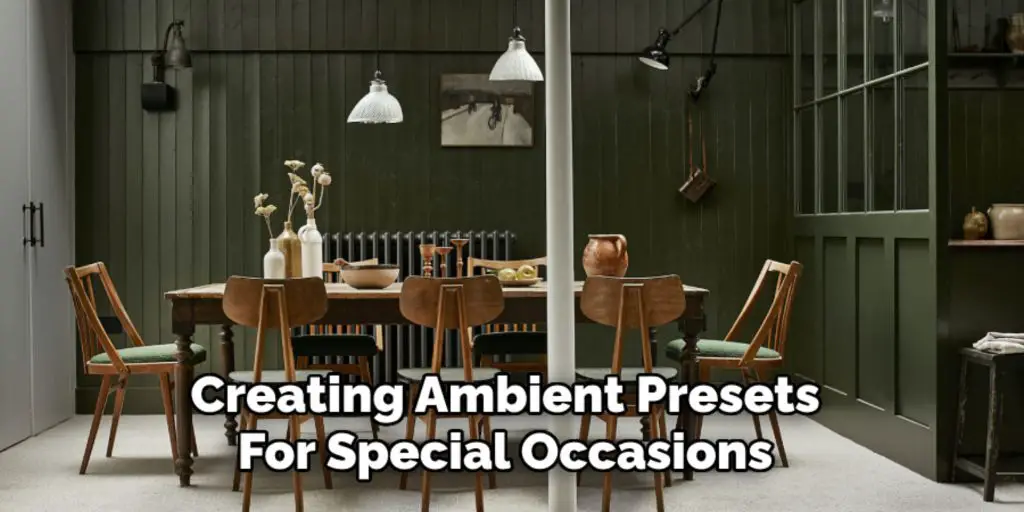
Practical Tips for Selecting Dining Room Lighting
Selecting the perfect lighting for your dining room requires a balance of practicality and style. Begin by testing fixtures in-store or viewing samples in spaces that mimic your dining area’s dimensions and design. This helps you visualize how your home’s fixtures will look and function.
Opt for lighting designs that are easy to clean, particularly for fixtures placed above dining tables, where dust and grease can accumulate over time. Mix and match lighting styles for a more dynamic aesthetic, such as pairing a bold chandelier with understated pendant lights or wall sconces.
This approach allows you to create a personalized yet cohesive look that complements your space. Additionally, ensure that the fixtures provide adequate light for dining and entertaining while also considering dimmable options for versatility. Thoughtful selection will result in a dining space that’s both functional and stylish.
Conclusion
Choosing the right dining room lighting involves carefully balancing style, size, placement, brightness, and energy efficiency.
These factors create an inviting and functional atmosphere that enhances your dining experience. Well-chosen lighting not only elevates the aesthetic of your space but also ensures practicality for daily use and entertainment.
Take your time exploring your options, focusing on your needs and preferences. By understanding how to choose dining room lighting thoughtfully, you can transform your dining area into a warm and welcoming centerpiece of your home.

